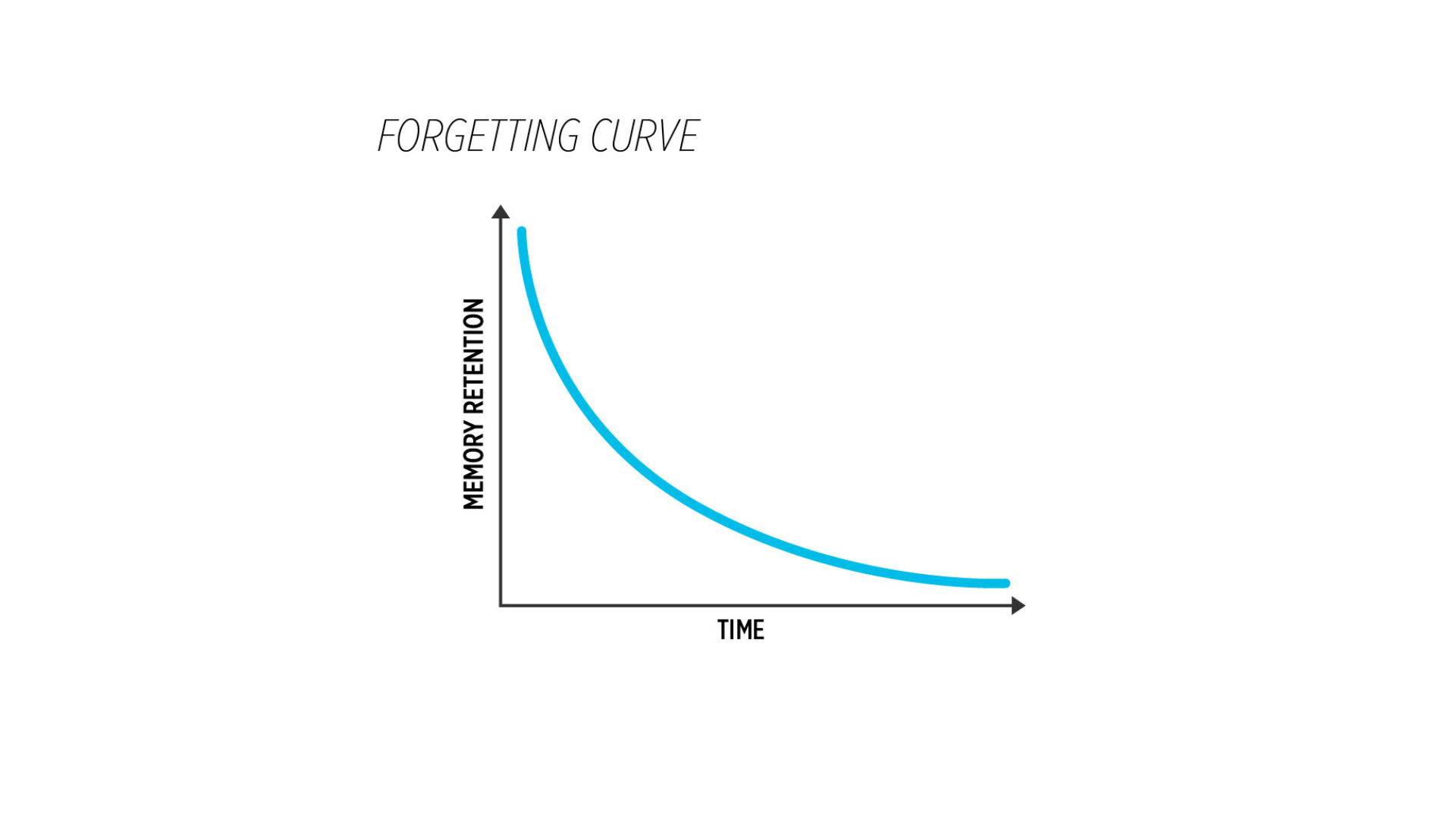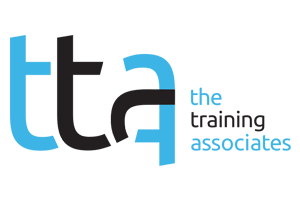Spaced repetition, also known as spaced practice, distributed practice or simply spacing, is a learning technique that involves breaking the study up into several short sessions over a more extended period. This method stands in stark contrast to cramming, offering a structured approach that enhances long-term retention of knowledge, making it particularly beneficial in adult learning environments, especially the workplace.
Imagine two employees tasked with learning a new software tool within two weeks. The first employee divides their learning into manageable, daily sessions spanning the two-week period, while the second crams all learning into a marathon session the night before a scheduled use of the tool. Initially, both might perform similarly. However, over time, the employee who used spaced repetition will likely retain and apply the software skills more effectively and with greater ease.
Understanding the Forgetting Curve
The forgetting curve illustrates how memory retention declines exponentially over time if new information isn’t reviewed. First documented by Hermann Ebbinghaus in 1885, the curve shows a steep drop in retention initially, which gradually levels off, indicating that the most significant memory loss occurs soon after learning. By integrating regular review sessions, spaced repetition effectively counters this trend, helping to maintain a higher level of retention over a longer period.

Cognitive Science Insights Into Spaced Repetition
Spaced repetition is grounded in cognitive science, which provides insights into how our brains store and retrieve information. Key processes involved include:
- Memory Consolidation: Revisiting material at spaced intervals helps consolidate long-term memory, making information more accessible over time.
- Neural Plasticity: Each review session essentially “rewires” the brain, strengthening neural connections associated with the learned material.
Research consistently supports the effectiveness of spaced repetition in learning. For example, one report found that participants who employed spaced repetition in their learning retained significantly more information after a month compared to those who did not. Another reported that spaced repetition could enhance retention rates significantly compared to massed learning sessions. These findings are particularly relevant for adult education, where the ability to retain and apply information over long periods is crucial for professional success. These studies highlight the potential of spaced repetition not just as a learning technique, but as a strategic tool for ongoing professional development.
Beyond enhancing immediate job performance, spaced repetition has profound implications for career development and continuous professional growth. Regular engagement with learning materials over extended periods not only solidifies the knowledge but also encourages learners to connect new information with their existing knowledge base. This continuous cycle of learning and application fosters a culture of lifelong learning within organizations, empowering employees to take proactive steps in their career progression. Over time, this can lead to higher job satisfaction, increased innovation and readiness to take on complex challenges as they advance in their roles.
Addressing Common Misconceptions and Challenges
Despite its effectiveness, spaced repetition is often misunderstood or underutilized in professional settings due to several misconceptions and challenges. There is a belief that longer, intensive study sessions can save time and effort. This is because short-term retention is better. However, this method is less effective for long-term retention and application. Both of which are essential in the workplace. Similarly, implementing spaced repetition in busy work schedules can seem daunting. Adults may struggle to find consistent time slots for revisiting material amidst their daily tasks.
Organizations can develop structured learning plans that include clear goals and milestones for spaced repetition interventions. By aligning learning sessions with individual and team goals, companies can make learning an integral part of the workflow rather than an additional task. Additionally, creating a supportive learning environment that rewards progress, such as through gamification or recognition programs, can significantly increase engagement and adherence to spaced repetition schedules. Facilitating peer learning groups can also help overcome the isolation that sometimes accompanies self-paced learning, adding a social dimension that reinforces learning through discussion and collaboration.
Strategies to Overcome Challenges:
- Regular short sessions: Encourage the integration of 5-10 minute review sessions into the daily routine, which can be as simple as reviewing notes or digital flashcards.
- Leveraging technology: Utilize eLearning platforms that incorporate spaced repetition into their algorithms to prompt learners automatically when it’s time to review material.
Practical Applications and Examples
Incorporating spaced repetition into workplace learning can take various forms, tailored to fit different organizational needs:
- eLearning Modules: Design e-learning courses that require learners to complete short modules repeatedly over several weeks.
- Training Workshops: In more traditional settings, spaced repetition can be implemented in training workshops where the same material is reviewed through various interactive activities spread across several sessions.
- Digital Tools: Many organizations adopt digital tools that facilitate spaced repetition. For example, software that sends regular prompts to review specific segments of training can significantly enhance retention.
Spaced repetition is a critical tool for enhancing adult education and professional development. By understanding and applying the principles of the forgetting curve, organizations can foster environments where continuous learning and information retention are deeply embedded into their culture. This strategic approach not only boosts individual performance but also enhances organizational efficacy, making it an indispensable part of modern professional development programs.







